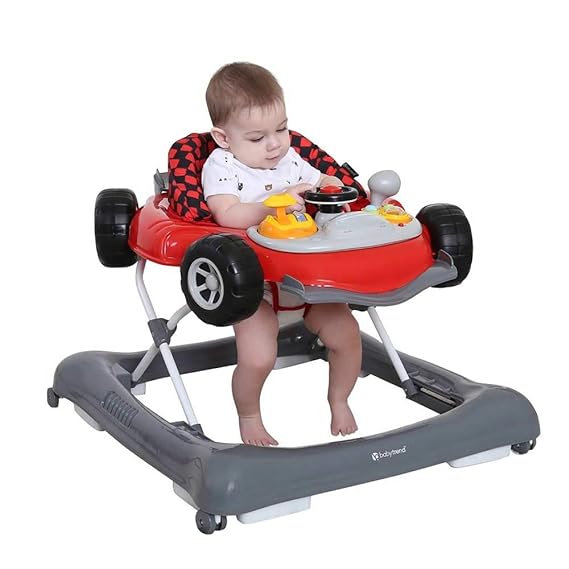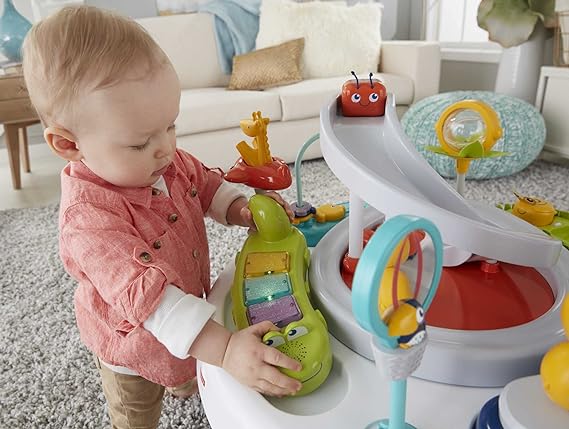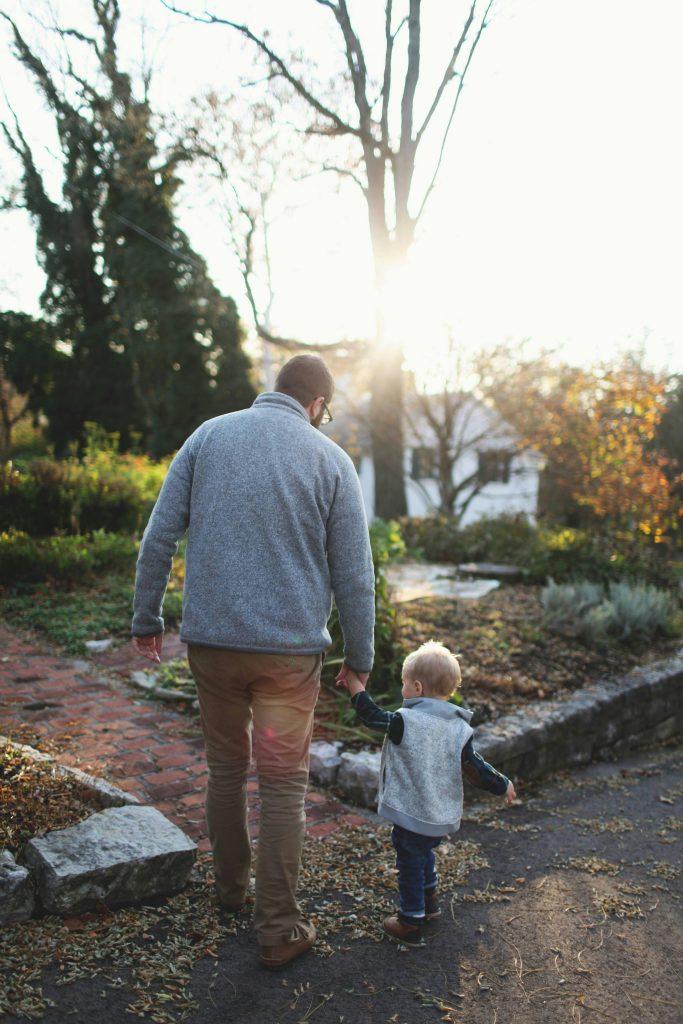
Table of Contents
The Importance of Supervising Baby Walkers
Supervision is very important when the child is using the walker. To prevent accidents, parents or caregivers should always be on hand and intervene immediately if necessary. Leaving a child unsupervised in a walker, even for a short time, can lead to serious injuries.

The recommended period of use:
Experts recommend limiting the time a child spends in the walker to short breaks, usually no more than 15-20 minutes at a time. When it comes to the safety and well-being of our little ones, it is most important to approach the use of baby walkers with prolonged use, caution, and mindfulness. Although these devices may offer some advantages in terms of entertainment and mobility assistance, their use must be balanced with an understanding of the potential risks involved.
The role of supervising:
When it comes to lowering the risks involved with baby walkers, monitoring is crucial. At this time, parents and other caregivers need to be present and focused. Be ready to step in and help as necessary when their child is utilizing the walker. This entails always being reachable and closely monitoring the infant’s movements.
Establishing a secure environment for the usage of the walker is also crucial. This entails clearing the area of any possible risks, like electrical cords, tiny toys, and sharp objects. It is best to close the stairs to prevent falls. It is only recommended to use the walker on sturdy, smooth surfaces.
Timing is the key:
When to introduce a baby walker: Time is also important. As stated earlier, it is necessary to wait until the child reaches certain developmental milestones. Accelerating this process can increase the chances of accidents and hinder the development of a child’s natural motor skills.
Parents should watch for signs of their child’s readiness, such as showing interest in standing up or trying to lift themselves. However, it is important to remember that every child develops at their own pace. Therefore, patience is the key.

The Search for Alternatives:
Although baby walkers are a popular choice for many parents, they are by no means the only option when it comes to helping a child move. Bat-to-stand walkers, push toys, and activity centers are all viable alternatives that offer similar benefits without the associated risks.
These alternatives encourage physical activity and exploration while providing support and stability for the child. In addition, they eliminate the risk of falls and tip-overs that can occur with traditional baby walkers.
There are tips and safe usage of baby walkers:
Baby walkers have grown in popularity as a tool for parents who want to support their child’s early attempts at walking. Although these tools have many advantages, tips, and safe usage, baby walkers must be a priority. The main advice in this post will help you use your baby walkers safely.
Guidelines for safe use:
It is very important to maintain guidelines for safe rules of use to reap the benefits of baby walkers while minimizing the risks. One way to do this is to limit the time the child spends in the walker to short, supervised sessions. It is important to provide constant supervision and engage with the child when using the walker. When it comes to using a baby walker, it is very important to establish proper time limits to ensure the safety and healthy development of your little one.

Use baby walkers at safe levels:
Hard and smooth surfaces:
Choose hard, flat surfaces such as wood or tiled flooring when using a baby walker. These surfaces provide stability and a smooth path for movement.
Avoid carpets and rugs.
Avoid using baby walkers on soft surfaces such as carpets or rugs. These surfaces can hinder the movement of the walker’s wheels and create a tipping hazard.
Check out the obstacles:
Before placing the baby walker on any surface, make sure that the area is free of obstacles, toys, or anything that could hinder the walker’s movement.

Protecting the area:
Choose areas that are free of potential hazards, such as stairs, edges, or sharp objects. Baby walkers should be used in closed spaces to prevent accidents.
Supervision is the key:
Always supervise your child when using the walker, regardless of the surface. This ensures a quick response to any unforeseen circumstances and adds an extra layer of security.
Recommended for internal use:
Although baby walkers are designed for indoor use, it is advisable to avoid outdoor use on uneven surfaces, gravel, or unpaved paths, as these can endanger stability.
Follow the manufacturer’s guidelines.
Follow the manufacturer’s recommendations regarding appropriate levels and usage guidelines. This ensures that the walker is used according to safety standards.
The regular care:
Check the condition of the wheels regularly. Please make sure they are clean, properly lubricated, and free of any debris that could affect mobility.
Using baby walkers on safe surfaces and adhering to these recommendations can provide a secure workplace for your baby to explore and enjoy their early mobility experiences. Always prioritize safety when using the walker, and pay attention to your child’s movements and the surrounding environment.
The following age ranges apply while using a baby walker:

1. Age range: 6–12 months.
- For children aged 6 to 12 months, short and supervised sessions in a baby walker are recommended.
- Aim for about 10–20 minutes per session, spread throughout the day.
- These short sessions allow your child to experience movement while avoiding overuse.
2. The age group is 12–15 years.
- As your child becomes more active and confident, you can slightly increase the walker session.
- Aim for 15–30 minutes per session, ensuring a break for other developmental activities.
3. Age: 15 years and above
- Once your baby is 15 months or older, consider reducing your dependence on a baby walker.
- Encourage more diverse forms of movement, such as crawling, strolling, and walking, with assistance.
Ensuring the safe use of baby walkers is crucial for your child’s well-being. Firstly, choose a walker with a wide, stable base and features like wheel locks to prevent accidents. Adjust the walker’s height to ensure your baby’s feet touch the ground comfortably. Only use the walker on flat, even surfaces, and avoid stairs or areas with potential hazards. Supervise your baby closely during walker use, staying within arm’s reach to prevent accidents.
Limit walker time to 15-20 minutes per session to encourage a variety of developmental activities like crawling. Remove any sharp or small objects from your baby’s reach, and secure the surrounding environment by covering electrical outlets and securing furniture. Lastly, never leave your baby unattended in the walker. Following these safety tips will help create a secure and enriching experience for your baby while using a walker.
Frequently Asked Questions (FAQs)
Reasons to watch over a baby while they use a baby walker?
To avoid mishaps and guarantee quick action when needed, monitoring is crucial. Even for a short while, leaving a youngster unattended in a walker can result in significant harm.
What is the suggested time frame that experts recommend for using baby walkers?
Experts advise setting a time restriction. Extended usage of the walker should be done so with caution due to potential dangers, even for brief periods when the child uses it—typically no longer than 15 to 20 minutes at a time.
How does surveillance help lower the dangers related to baby walkers?
In order to lower the hazards related to baby walkers, monitoring is essential. Caregivers and parents must be present and attentive. One should keep a close eye on the child’s actions and be prepared to intervene and offer assistance when required.
What are some safer substitutes for baby walkers that provide comparable advantages?
Instead of the risks associated with typical baby walkers, alternative solutions include sit-to-stand walkers, push toys, and activity centers that offer support and stability for baby movement.
What are some recommendations for using baby walkers safely?
Recommendations from the manufacturer should be followed, and the walker should only be used for brief, supervised periods. Other safe use guidelines include making sure the area is clear of hazards and utilizing the walker only on smooth, hard surfaces.
Conclusion
Safe usage of baby walkers is essential for the child’s well-being. Accidents can be avoided in large part by practicing safety. Experts advise limiting the walker’s use to brief, under supervision periods. In addition, it’s critical to create a risk-free atmosphere and adhere to safety regulations, such as using the walker only on secure surfaces and as advised by the manufacturer. By putting safety first and adhering to these rules, parents may establish a secure and stimulating encounter with their child while using a walker.
